You would be hard-pressed to find too many New York Rangers fans these days who aren’t happy with the team’s personnel moves in recent seasons.
From what looks like largely strong draft efforts, to the flurry of trades that brought back a wealth of young talent, to the signing of Artemi Panarin, the front office appears to have its rebuilding project moving along very well in the form of an improving young club.
Many of those same fans, however, are old enough to remember when the Rangers’ approach to team-building often resembled a train wreck – which makes the sad saga of Lias Andersson seem so familiar.
The Rangers have confirmed that Andersson, the seventh overall pick of the 2017 draft, has requested a trade and left the club (From ‘Rangers’ Former Top Pick Lias Andersson Asks for Trade’, New York Post, 12/21/19). It appears to be an ugly end to a disastrous tenure with the Blueshirts for Andersson, who had been playing with the Hartford Wolf Pack of the American Hockey League after being sent down in mid-November. Andersson had made the Rangers out of training camp, but recorded only one assist in 17 games. He then delivered little at Hartford, recording three points in his final 10 games there.
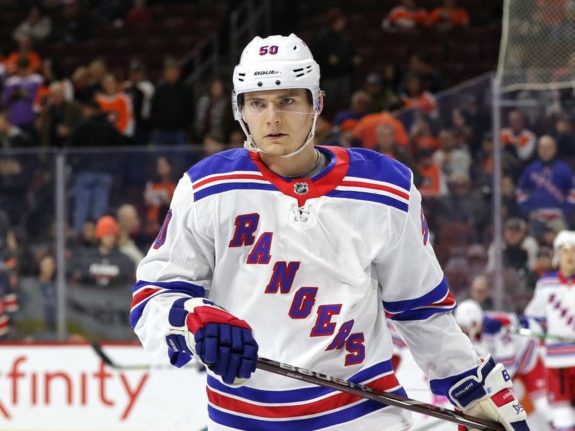
Much of the initial reaction to the news centered on Andersson, and rightly so – his decision to pack up and leave is selfish and immature, making it glaringly evident that the player might lack the ability to overcome the adversity sure to face any prospect trying to make it to and succeed at the highest level of hockey.
Andersson’s Failure Might Lie with More Than Just Himself
On the surface, Andersson looks like a throwback to so many first-round draft misfires that have plagued the Rangers in recent years – Dylan McIlrath (10th overall in 2010), Bob Sanguinetti (21st in 2006), one spot ahead of Claude Giroux, Al Montoya (sixth in 2004), and, perhaps most painfully, Hugh Jessiman (12th in 2003), a huge miss in one of the most talent-laden drafts in recent history in which the Rangers passed on Dustin Brown, Brent Seabrook, Zach Parise, Ryan Getzlaf, Brent Burns, Ryan Kesler, Mike Richards and Corey Perry in the opening round. Going back for a little more illumination, let’s not forget Pavel Brendl (fourth overall) and Jamie Lundmark (ninth) in 1999.
It should be noted that the Rangers’ second first-round pick of 2017 serves as a strong indicator of a significantly better personnel operation being in place now – after taking Andersson with what was the Arizona Coyotes’ choice acquired in the Derek Stepan trade, general manager Jeff Gorton selected rising young center Filip Chytil 21st with the Rangers’ own pick. Chytil has proved to be Andersson’s opposite – despite a similarly rocky start to his NHL career, Chytil used this year’s demotion to the AHL out of training camp as apparent motivation, excelling in a short stint at Hartford before being recalled to the Rangers and establishing himself as a possible future cornerstone.
Yet there’s more to this draft pick being a disappointment than just a misjudgment of talent or Andersson’s unforeseen fragile ego and confidence- in a couple of key ways, the Rangers may have set Andersson up to fail.
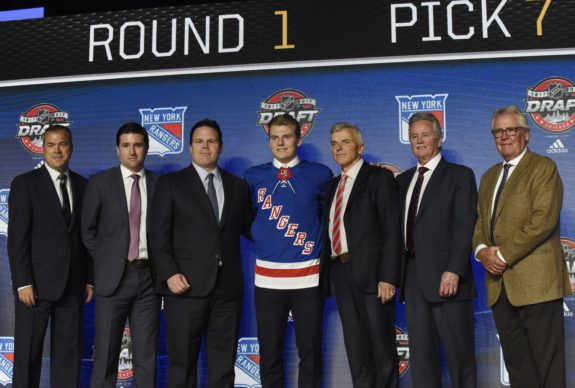
Stories abounded at the time of the 2017 Draft that the Rangers, apparently determined to start adding more youth to their then-veteran lineup, felt Andersson had the polished game to more quickly break into the NHL than other available draft picks – specifically, for that coming season of 2017-18. So far, no player from that draft has emerged as a glaring reminder of what the Rangers might have missed on, though it’s still too early to accurately judge that group of talent.
Andersson proved to not be ready for the NHL that next season, failing to make the team and instead playing 47 games between Swedish club Frolunda and the Wolf Pack before being called up in March for a seven-game cameo with the Rangers. The question is, did Andersson’s inability to fulfill the Blueshirts’ unrealistic expectations for him that season mark the beginning of his downward trajectory with the club?
The apparent urgency to get Andersson to Madison Square Garden brings back painful memories of a similar personnel mistake – the team’s ultimate rush job of the late-1990s. That was center Manny Malhotra in 1998, who, like Andersson, was drafted seventh overall, then forced into the Rangers’ opening-night lineup at age 18 in a desperate attempt to show fans that the team was committed to adding young talent (From ‘Rangers’ Approach to Handling Their Young Talent Continues to Show Rewards’, The Athletic, 11/13/18).
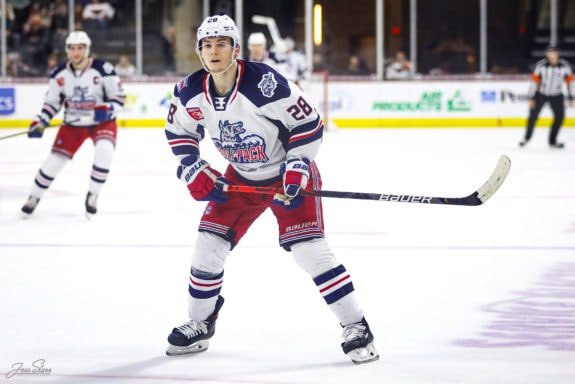
Malhotra, a player whose game resembled Andersson’s, went on to a long career for several teams as a third and fourth-line-type center, but never developed into what the Rangers thought he would be, and was gone from New York after parts of four seasons. Who knows what proper and patient development might have done for him?
This is not to suggest that the Rangers so mismanaged Andersson as to quash elite talent. His less-than-elite skating and puck skills hardly suggested a top-six NHL center would emerge even before this week’s development. Yet the Rangers had to have seen something they liked to draft him so high – size, grit and, at the time, leadership and determination.
We’ll never know if less initial pressure on Andersson – which, along with the Rangers’ expectations for him, possibly stemmed from Andersson being selected much higher than most other clubs expected – might have allowed him to polish what he does well in the minors rather than being viewed as ready to contribute immediately at the NHL level.
Andersson a Victim of Double Standard?
That appeared to contribute to the second misjudgment by the team during the past two years – it seemed as if Andersson’s inability to stick right away in the NHL followed him through the organization. Head coach David Quinn, who has done an admirable job developing some of the Rangers’ young talent during his season-plus at the helm, never seemed to warm to Andersson, never extending the tough-love-and-support approach that he’s undertaken with Chytil and others.
It’s possible Quinn didn’t see great potential in Andersson and thus, felt it wasn’t worth expending too much time and energy on the player. With Chytil and others such as defenseman Tony DeAngelo, the coach always took pains to let them know they were part of the future even at their lowest points, when questions abounded about whether both players were headed for bust status.
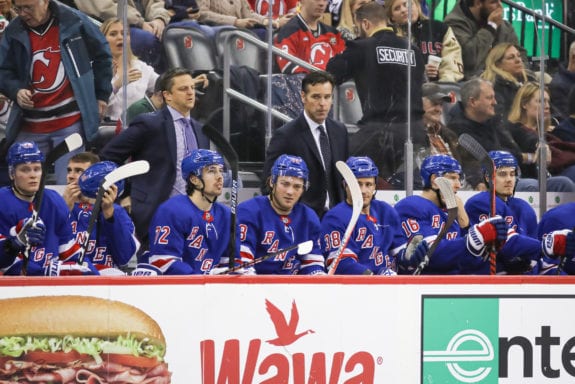
Quinn’s mantra since arriving has been to steadfastly avoid giving highly regarded young players ice time simply because they are highly regarded young players, in an admirable effort to avoid creating a toxic sense of entitlement on the roster. Yet, Andersson seemed to find himself in a no-win situation – he rarely got more than 10 minutes of ice time per game playing almost exclusively on the fourth line during his 17 contests this season. Was the 21-year-old expected to distinguish himself in such limited action, playing on a forward unit that by definition generally exists to provide a brief change of pace from the top three lines?
Contrast Andersson’s status with that of fellow 21-year-old center Brett Howden. Quinn has steadfastly stuck by Howden, and the organization is said to be enamored with his work ethic, potential and intangibles. For all of that, however, Howden has totaled 10 goals and 22 assists in 102 NHL games. Despite that meager production, he’s generally received consistent top-nine work through numerous stretches of delivering little or no offense over the past two seasons.
In the midst of a 15-game goal drought, Quinn took steps to get Howden going Sunday, moving him onto the right-wing with Chytil and Brendan Lemieux. Howden responded with a goal in the Rangers’ 5-1 victory over the Anaheim Ducks – rewarding the coach’s apparently unyielding faith in him.
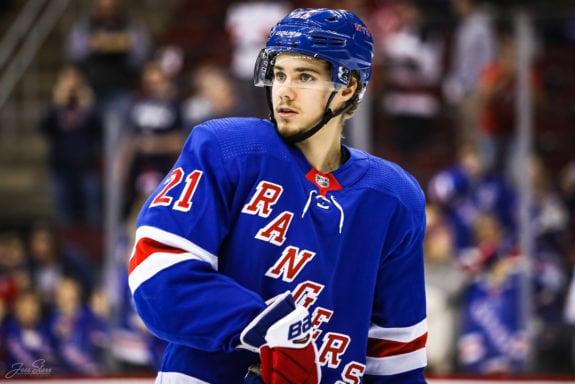
Given 102 games in Howden’s place – which would come with better linemates and a consistent place in the lineup – would Andersson have delivered 10 goals and 22 assists? Again, we’ll never know. What we do know is that 15 games without a goal resulted in Howden being moved onto the wing on a different line in an attempt to spark him. A similar stretch of goalless games got Andersson sent to the minors.
Andersson has largely made his own bed here, and the pitchforks are out amongst fans and media alike. He didn’t do enough in his coach’s eyes to earn a bigger role. His failure to accept his demotion to the minors as an opportunity to improve and impress, as Chytil so admirably did, and then quitting on his team speaks to an alarming lack of mental toughness that has left Gorton trying to find a trade for a player with little value.
Yet the way the organization handled Andersson – from the unrealistic early expectations to the refusal to get a look at him with meaningful NHL minutes as it did with others, to nagging suspicions that Andersson didn’t enjoy the team’s support for his future – suggests there’s blame to go around.
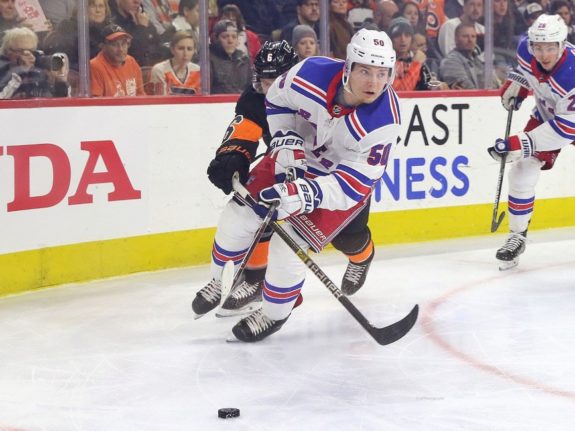
For a front office that’s been mostly ably helmed by Gorton for the past four years and now, new team president John Davidson, the Andersson episode hearkens back to a time when the Rangers weren’t seen by anyone as the standard in talent procurement and development. Perhaps the ordeal will serve as a learning experience and a reminder of what’s been done before – and what not to repeat.